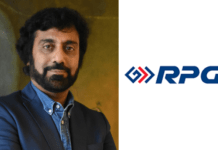Guillermo Miranda, chief learning officer, IBM is a seasoned executive with 19 years of extensive experience working in multinational environments across Europe, South America, Africa, West Asia and North America. A lawyer and business management graduate, Miranda is on his second stint with IBM with a mandate to reinvent learning and employee enablement for the digital and cognitive economy.
He speaks to HRKatha on how the landscape of learning is changing with the rapid digital disruptions.
You have been an IBMer for most part of your professional life and this happens to be your second stint. Does it give a feeling of homecoming? What’s life like being an IBMer? As an HR professional, what’s your advice for HR colleagues while onboarding a boomerang employee?
The privilege to come back to an organisation brings a special mark to the way one sees things internally, because it comes with the value-add of having an external eye at the same time.
I believe that boomerang employees have better insights about the real meaning of some of the rituals and culture of the organisation, and how that compares with the external marketplace.
The talent equation should always comprise several components, and the presence of boomerang employees creates a good combination for businesses to achieve the desired outcome.
While any boomerang employee should be onboarded the same way as any other, the advantage with them is that one can even take a shortcut, as they already know some basics.
In addition, boomerang employees can help guide other new employees, acting as catalysers for them to understand and adapt to the new organisation.
A lot has changed in the last one year in the workspace—everything from the way we work to whom we work with is undergoing a shift. What’s been the impact of IoT and AI on L&D?
L&D is now ready for a big disruption. Traditionally, it followed the corporate university model trying to imitate the academia environment. Corporate learning is now undergoing change and three factors play an important role in this disruption.
As L&D professionals, we need to create a smooth and seamless connection between digital and physical work for the employees. They are not ready to accept the traditional methods of learning and the old-fashioned LMS anymore.
First is technology, which is changing everything. The availability of various things on our smartphones at the touch of a fingertip, has raised the expectations among employees from learning opportunities as well.
The second aspect is the consumerisation of these expectations. Employees expect the same experience in learning as in their daily lives as consumers. As L&D professionals, we need to create a smooth and seamless connection between digital and physical work for the employees. They are not ready to accept the traditional methods of learning and the old-fashioned LMS anymore.
The third component is the job context. Earlier, one job description defined a particular job and everything it entailed, while in the evolving marketplace now, every job requires multiple abilities, especially in the professional services arena, which is where corporate university thrives. This means, if the role of L&D earlier was to prepare the employees for their set job roles, now it is to prepare them for the multiple tasks and job roles that they might have to take on within an organisation.
Do you think AI would be a better teacher than humans? The teaching and learning performed by machines at a massive speed and scale is exhilarating and frightening at the same time.
I believe, AI and cognitive systems are enhancers of human capability but they cannot replace humans. The complexity of the brain and social behaviour of human beings is extremely difficult to replicate, even closely.
Organisations that invest less in learning and more in recruiting and turnover will need to revisit their business model.
At IBM, Watson provides us amazing capabilities to enhance the insights of people driving day- to-day business. Similarly, for L&D, cognitive systems enhance the ability to impact.
Last year, we launched our new cognitive learning platform, ‘Your Learning’, which allows personalisation, and smart projections. It allows the system to understand the learners’ preferences and tailor their learning experience to their profile and behaviour. The cognitive system has the ability to learn who you are and in a dynamic way adapt to what you need. This will bring exponential expansion in L&D and that’s what we are doing at IBM.
A recent survey by Deloitte suggests 22 per cent of millennials treat T&D as a benefit and this is a higher share than any other benefit. Do you think companies across the globe are taking it seriously and doing enough to grow the learning curve of their employees?
Career acceleration and growth of skills and competencies is the core of our employer branding at IBM. If you ask any IBMer or any former IBMer about their best experience as an employee, most of them will mention how IBM changed their outlook towards professional life.
Take, for instance, my case—I am a lawyer who did an MBA with a major in finance, and while I have also worn various other hats at IBM before, I now drive their digital platform business. This shows that IBM allows one to move along in their career.
The role of the talent managers five years ago was focussed on how to create a career path for an individual. Today it has evolved into how to create an environment for the team to succeed.
At IBM, learning is considered a core part of employer branding. This isn’t something new. However, organisations that invest less in learning and more in recruiting and turnover will need to revisit their business model. One can buy talent from the marketplace but the level of engagement and loyalty may be much lower.
Also, what do you do with those employees when that role no longer exists? AI, cognitive systems and digital experience have made it much more feasible to scale up L&D than the traditional investments in the brick & mortar corporate university rules. The whole L&D space, as I mentioned earlier, is now ready for a big disruption.
What learning architecture have you adopted to put employees in charge of the learning experience and foster a culture of learning throughout the organisation?
You have to let employees perceive learning as an advantage and as a value-add. The days of compliance-based learning are gone.
Yes, we may still need to have certain basic compliance programmes because we operate in regulated industries or it may be a part of the employment agreement. However, we need to provide employees quick and fast learning—on their fingertips. It needs to be done at the right moment, in the right medium and with a seamless transition between the digital and the physical.
One can buy talent from the marketplace but the level of engagement and loyalty may be much lower.
We need to work towards enablement and personalisation, and then provide tailored recommendations for employees. Learning, by the way, is just one component. Organisations also need to build a culture around how they drive the performance of the organisation as one that learns, adapts and possesses agility in its DNA.
L&D professionals need to behave like product managers working for customers who have unfulfilled needs, rather than simply design courses that employees are required to complete. Do you see the shift happening soon on a larger scale?
Absolutely! We need different characteristics now as we cannot fulfil the promise of learning as a core element of employer branding without having the professionals in L&D playing different roles. This is not about pushing a process or pushing an initiative or a programme anymore.
We now need to take out the chip from the brains of our teams and put it in the digital marketplace to create an experience for the employees around their expectations. For this to happen, L&D needs to behave more like a community manager or a merchandising manager.
At IBM, for instance, we have such different characters in our L&D team. Our most sought-after team member or the proud jewel of the L&D team currently is no trainer or content creator, but one of our distinguished engineers. He is our cloud architect, and he is the one who brings about a difference in many of the things that we currently do in L&D.
Based on your experience, how has talent management evolved over the years, especially in the IT sector, where both attrition and talent mobility are high?
Talent management is now shifting to enabled, more multitasking teams instead of individuals. The role of the talent managers five years ago was focussed on how to create a career path for an individual. Today it has evolved into how to create an environment for the team to succeed. The marketplace is moving very rapidly into agile execution — the ability to get a team that can accomplish a task and again disband it to create another team that can accomplish some other task for the future.
The world, where everyone used to have a job role with repeat tasks is rapidly vanishing and moving into an agile methodology.
It is similar to the Hollywood movie-making model—where you get the actors and crew to make a movie and then move onto another project, with probably a totally new team.
The world, where everyone used to have a job role with repeat tasks is rapidly vanishing and moving into an agile methodology. Though, it may not be the case with sectors, such as manufacturing, as it still works the traditional way, but even in that the role of the talent team is going to be central in the way we conceive and structure talent management.
In times such as these, one cannot construct an efficient talent management plan thinking just about individuals, because it is the team one collates, that makes a difference.
What is the one thing organisations need to really focus their energies on in order to be successful in the digital age?
There is no one thing, but I would say organisations need to embrace the new reality of the marketplace and the digitisation of everything that is taking place around us. If you don’t embrace the digital tsunami, you will end up on the losers’ side.
Value our content... contribute towards our growth. Even a small contribution a month would be of great help for us.
Since eight years, we have been serving the industry through daily news and stories. Our content is free for all and we plan to keep it that way.
Support HRKatha. Pay Here (All it takes is a minute)




































